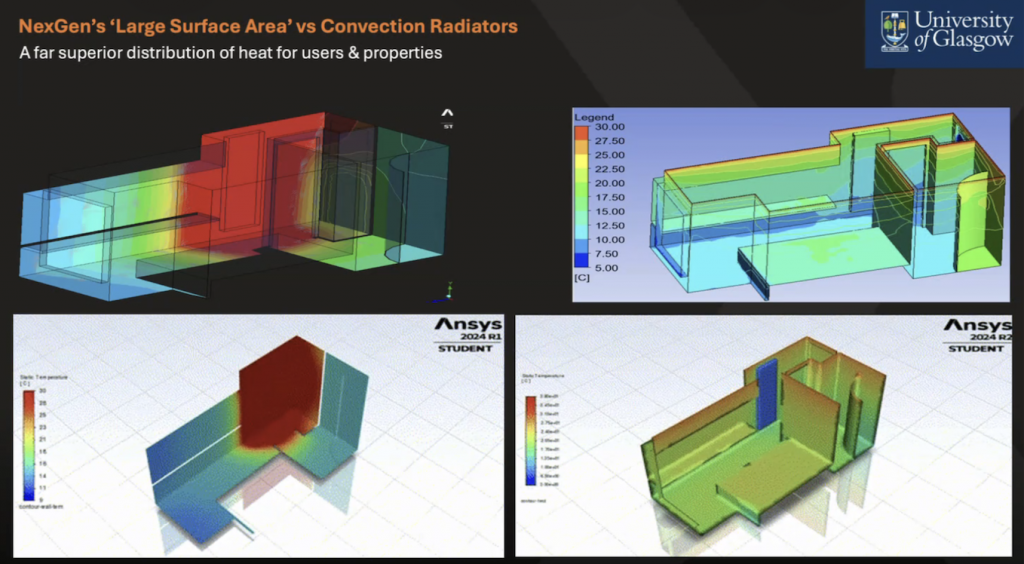In the issue of home and office comfort, we focus primarily on the thermostat level, but the distribution of heat within the room is just as important. One of the usual drawbacks of traditional radiators is that they have a tendency to heat a room unevenly such that corners, window areas, and bottom areas are cold and overheating areas near the unit. Recent University of Glasgow studies, however, are putting a new spin on a better, more even type of solution: infrared ceiling heating.
A Study in Even Heat
In one recent test by the University of Glasgow, researchers contrasted a standard wall-mounted radiator against the NexGen infrared ceiling panel heating system and compared their performance levels. The result categorically demonstrated that infrared ceiling panels provided much more even heat distribution across the trial room.
Unlike radiators, which warm the surrounding air (causing warm air to rise and cold air to fall), infrared ceiling panels emit radiant heat that travels in direct lines and warms surfaces and people directly. The study found that this method of delivery caused heat to reach every part of the room, including harder-to-reach spots like window areas and bottom corners—usual spots where cold spots happen.
Preventing Mould and Maximising Comfort
One of the most valuable observations reported in the Glasgow study was the impact of even heating at windows. In traditionally heated rooms, cold air collects at window positions, leading to condensation and ultimately the development of mould. But with the NexGen ceiling heating system, the radiant heat penetrated to window edges, eliminating cold spots and damp or mould from developing.
This not only enhances indoor air quality and building health over the long term but also helps create a more even and comfortable indoor environment. No more shivering in front of the radiator to keep warm while your toes remain cold, or having to turn the thermostat up to try and offset cold spots.
The Infrared Advantage
The beauty of infrared heating is its simplicity and effectiveness. Installed in the ceiling, it runs silently, out of sight, and efficiently. Freeing up wall space and blending with the room. As it heats surfaces and people, not air, there is minimal heat lost via ventilation or draught, and no circulating dust, which makes it ideal for allergy sufferers as well.
The University of Glasgow’s research provides scientific backing for the advantages that infrared ceiling heating users have already found for themselves: warmer, more uniform comfort and improved building health.
If you’re considering replacing your heating and want a system that actually heats your whole space, not just the ambient air from a radiator, infrared ceiling panels like NexGen offer a future-proof solution that’s as smart as it is simple.


